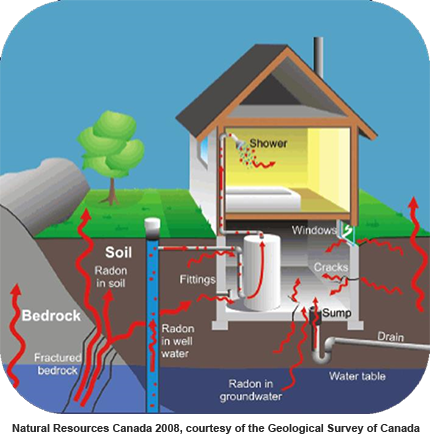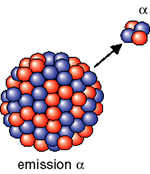Test your properties for radon ...now!
Radon is a naturally occurring radioactive gas that you can't see, smell or taste. Radon is the leading cause of lung cancer after smoking, leading to about 16% of lung cancer deaths each year in Canada (nearly 3,000 deaths). High levels of Radon may be found in any enclosed space such as a home, warehouse, office building or school. The only way to find out how much radon is in a building is to test for it.
About 10% of buildings in Quebec will exhibit radon ratings above the Health Canada intervention threshold (200 becquerels/m3). The occurrence of radon in a given building is largely unpredictable. The only way to know is to have your building tested by professionals.
SOLROC can both test and fix radon issues.
November is radon awareness month:
www.takeactiononradon.ca
Take care of it!
For $600 SOLROC provides you with a professional evaluation of the radon related risk in your building.
When radon is released from the ground outside, it mixes with fresh air and gets diluted resulting in concentrations too low to be of concern. However, when radon enters an enclosed space, such as any building, it can accumulate to high concentrations and become a serious health risk.
Radon gas can enter any place it finds an opening around the area where the building contacts the soil: cracks in foundation walls and in floor slabs, construction joints, gaps around service pipes and support posts, floor drains and sumps, cavities inside walls, and the water supply.
Radon can also be found in groundwater from private or small community wells. Radon produced in the ground can dissolve and accumulate in water from underground sources such as wells. When water containing radon is agitated during daily household use - showering, clothes washing or cooking, for example - the radon gas can be released into the air. However, research has shown that drinking water that contains radon is far less harmful than breathing the gas. The health risk does not come from consuming the radon, but from inhaling the gas. And in most cases, the risk of radon entering the home through water is much lower than if it enters through the ground. Materials used to construct a house - stones, bricks, cement, or granite, for example - are not a significant source of radon in Canada.
Almost all homes have some radon. The levels can vary dramatically even between similar homes located next to each other. The amount of radon in a home will depend on many factors including:
- Soil Characteristics: radon concentrations can vary enormously depending on the uranium content of the soil. As well, radon flows more easily through some soils than others, for example sand versus clay.
- Construction Type: The type of home and its design affect the amount of contact with the soil and the number and size of entry points for radon.
- Foundation Condition: Foundations with numerous cracks and openings have more potential entry points for radon.
- Occupant Lifestyle: The use of exhaust fans, windows and fireplaces, for example, influences the pressure difference between the house and the soil. This pressure difference can draw radon indoors and influences the rate of exchange of outdoor and indoor air.
- Weather: Variations in weather (e.g., temperature, wind, barometric pressure, precipitation, etc.) can affect the amount of radon that enters a home.
- Stack Effect: the taller the building, the more it will tend to "suck the gas out" of the basement.

WHAT IS RADON?
Radon is a radioactive gas that is formed naturally by the breakdown of relatively abundant uranium in soil, rock and water. adon is colourless, odourless and tasteless.
Because there are so many factors, it is not possible to predict the radon level in a building or home. The only way to know for sure is to test.





